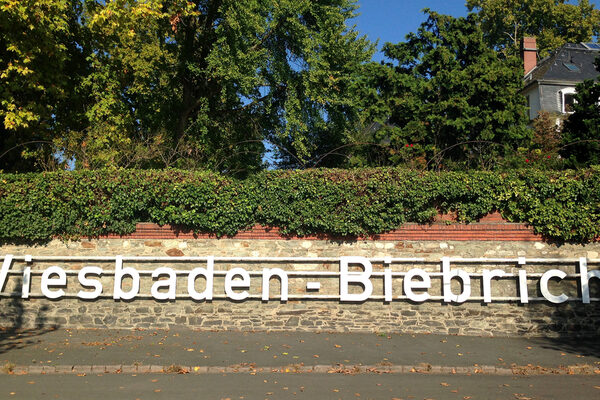Biebrich: a district with an eventful history
Biebrich is a district of Wiesbaden with a long history; it was first mentioned as "vila biburg" in 874. Archaeological finds prove that the region has been inhabited for thousands of years.
First traces
Despite its late mention, Auringen is thought to date back to the time of the Germanic land conquest. At that time, Germanic peoples colonized large parts of Central Europe. Place names with endings such as -ungen or -ingen as well as the favorable climate and fertile soils point to this early settlement period. The ideal conditions for agriculture shaped the village for centuries.
Middle Ages
Biebrich was of great importance in the Middle Ages, as the Counts of Nassau held the ferry rights across the Rhine. Three monasteries in particular shaped the everyday social, economic and religious life of the people: Selz Monastery in Alsace, Eberbach Monastery in the Rheingau and Klarenthal Monastery near Wiesbaden. The Mosbach church, whose late Gothic tower still dominates the townscape of Biebrich today, is also worthy of mention.
Residential city of Nassau
With the construction of Biebrich Palace at the beginning of the 18th century, the district became the residence of the Princes of Nassau and later the Dukes of Nassau. This era ended in 1866 when the duchy was incorporated into the Kingdom of Prussia.
Industrial bloom
The convenient location on the Rhine and the railroad connection (1840) promoted Biebrich's industrialization. Important companies shaped the location:
- 1831: Adam Heckel opened a factory for woodwind instruments
- 1858: Heinrich Albert founded the later Chemische Werke Albert
- 1863: Wilhelm Kalle built a chemical factory
- 1864: The Portland cement factory Dyckerhoff & Söhne started operations
- 1909: Henkell & Co. moved to Biebrich
Biebrich developed into an important industrial location alongside Höchst. The population grew from 3,500 (1840) to 21,200 (1910). Biebrich was granted city rights in 1893. Incidentally, the Kalle company introduced the "sausage skin" and the "sponge cloth" to the world.
The world wars
The years leading up to the First World War were a time of prosperity for Biebrich. Numerous companies prospered and the population grew rapidly. But after 1918, this positive development came to an abrupt end. The town got into financial difficulties and came close to bankruptcy. To escape these problems, Biebrich joined the financially stronger Wiesbaden.
On October 1, 1926, Biebrich was officially incorporated into Wiesbaden. The two world wars and the difficult post-war years had a lasting impact on the district. The Jewish community in particular suffered persecution, expulsion and murder during the Third Reich.
Boom and crisis
In the 1950s to 70s, Biebrich experienced strong growth due to the economic miracle: the district expanded and many immigrant families came to work in the companies on the Rhine. New districts such as Gräselberg and Parkfeld emerged. In the 1980s and 90s, the economic crisis led to job losses and the number of employees in the companies on the Rhine fell from 18,000 to 6,000.
Biebrich's personalities
Biebrich can be proud of numerous personalities who were born here. These include the cultural scientist Wilhelm Heinrich von Riehl, the philosopher Wilhelm Dilthey, the resistance fighter Colonel General Ludwig Beck, the Jewish member of the Reichstag Tony Sender and Wiesbaden's legendary Lord Mayor Achim Exner.
Historical highlight
Biebricher Allee was laid out around 1857 as a prestigious link between Wiesbaden City Palace and Biebrich Palace and is still an important traffic axis today.
